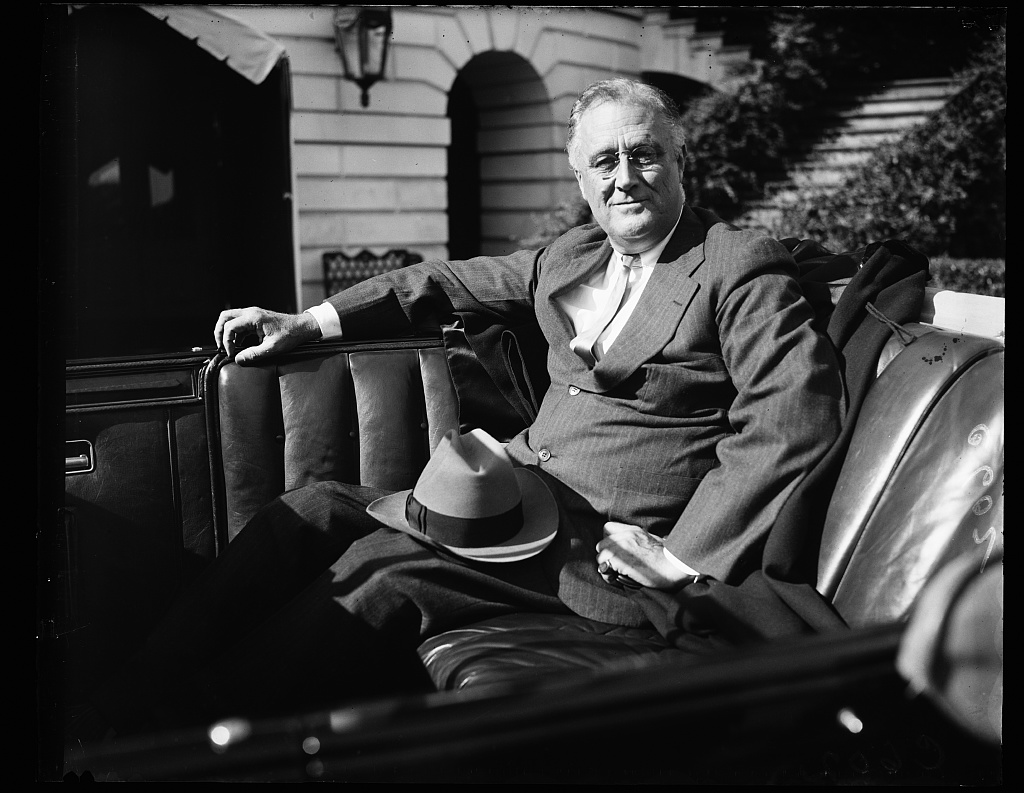The Passing of FDR

Serving an unprecedented four terms in office, President Franklin Delano Roosevelt had guided the American nation through the darkest days of the great depression, as well as through the majority of World War Two.
On April 12th, 1945, in what would become the final days of the war, FDR passed away at his retreat in Warm Springs, Georgia, leaving Vice President Harry S. Truman in charge of a nation still at conflict.
Roosevelt sat in his living room with two cousins and Lucy Mercer, the later having resumed an extramarital affair with the president. While artist Elizabeth Shoumatoff painted his portrait, at 1:00 pm the president suddenly complained of a terrific pain in the back of his head, collapsing moments later into an unconscious heap, the victim of a massive cerebral aneurysm.
Eleanor Roosevelt Breaks The News To Truman
Back at the White House, after Eleanor Roosevelt was given the news, she met with Vice President Truman, who had not yet been told. A calm and collected Eleanor said,
“Harry, the president is dead,”
to which he replied, “Is there anything I can do for you?” Eleanor replied, “Harry, is there anything we can do for you, for you are the one in trouble now.”
The Country Mourns FDR’s Death
Overseas, American servicemen and women were made numb by the news, for the majority of the young fighters had known no other president for the entirety of their lives. As FDR’s funeral train rolled across the southern countryside, people thronged for a last farewell to their wartime president.
In Washington D.C., FDR’s mortal remains were paraded in honor to the Capital where he was to lay in state. After the formal national ceremonies were over, he was buried in his hometown of Hyde Park, New York.
The 22nd Amendment
Following the only four-term presidency in American history, Congress passed the Twenty-Second Amendment, which limited a sitting president to no more than two terms. The Amendment was passed on February 27, 1951.
